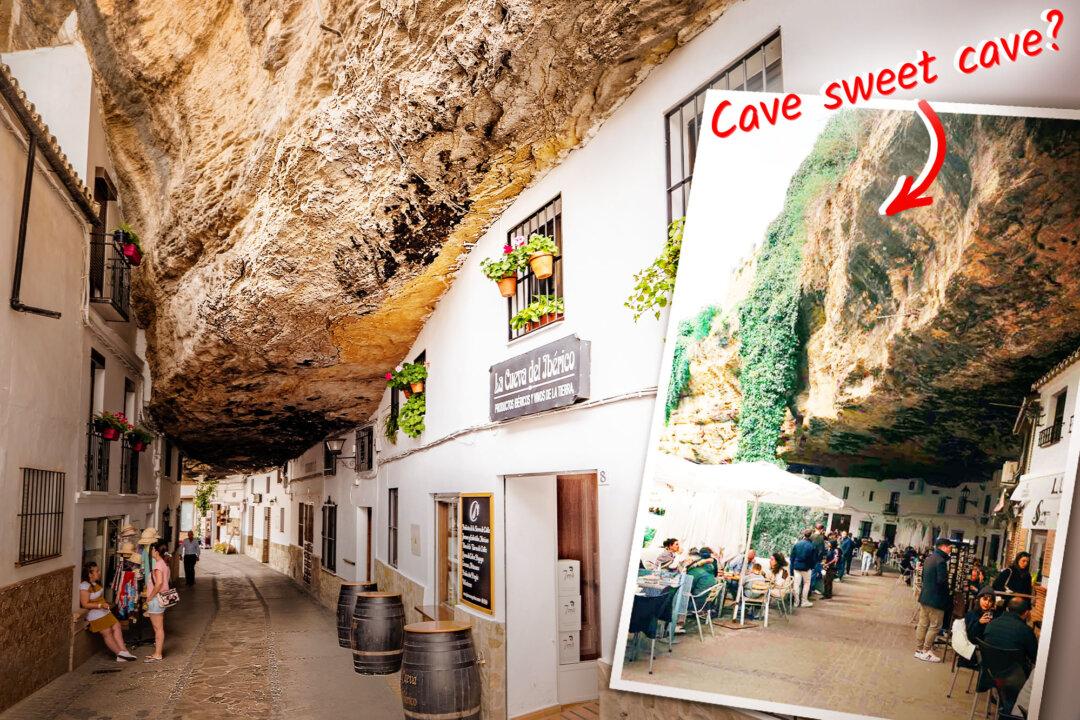A wonderful street of shadows curves gently along the basin, with bodegas and restaurants abuzz on either side. On this shaded street, beneath a craggy boulder that mysteriously overhangs as if magically softened and then squished tightly between the whitewashed façades, Spaniards and travelers alike patronize in the vast cool shade in August.
There is more to this strange boulder than meets the eye; a whole monolithic cliffside hangs down over the row, appearing to squeeze the establishments, such that it is hard to tell: Were the shops built between the rocks? Or did the rocks form around the shops? These questions invite discovery. But looking at the bustling, shaded street, it leaves little wonder as to why the Moors of the 12th century held out in this wonderous enclave centuries ago.






